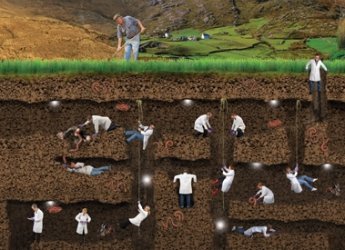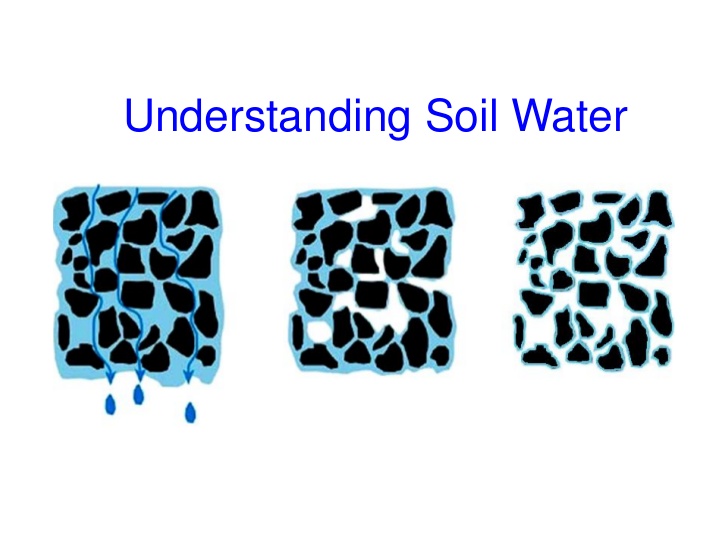Introduction
In arid and dryland farming, water has premium importance. It is available in scarce quantity, so its usage should be carried out in a wise manner. In this regard, understanding soil chemistry and soil-water relationship is of utmost importance especially for arid and dryland farming systems. This article will highlight various types of soil water or precisely the combinations of water that is available in connection with the soil particles that give birth to new and innovative soil-water relationship.
Soil chemistry is complex. Understanding soil needs in-depth analysis of various factors. One of these is the soil-water relationship. The interaction of water with soil is always the element of interest for agriculturists and especially soil scientists all around the globe. The study of soil-water relationship gives birth to a phenomenon called as ‘types of soil water’. Soil scientists classified this relationship in various categories which I will discuss later in this article. Firstly, it is important to understand the behavior of soil when it receives water.
You May Like this Also: Why Choose Agriculture as Career?
Suppose the soil is dry. You add water to the soil by any means say for example through irrigation, or rainfall. The water gets in touch with the soil and is distributed all around the particles of soil. The water around the soil particles is held through adhesion and cohesion forces. By the action of these forces, air gets displace that is present in pore spaces and water enters in these pores and fill them. The pore spaces are of various sizes. When all these pores get filled whether they are small, medium or large, we call that soil is saturated and it is now at maximum capacity of retention.
Types of Soil Water
It is difficult to define what the exact soil water definition is, but for the sake of easy understanding of students and general readers, soil scientists classify various kinds of soil water into following categories.
- Gravitational Water
- Hygroscopic Water
- Capillary Water
- Water Vapors
1. Gravitational Water
It is the simplest type of soil-water relationship. In this, when soil gets water, water moves freely under the action of gravitational force and drains out of the soil. This happens, when the capillary capacity of soil is fulfilled and additional water comes under the gravitational pull. This additional water then starts moving freely through the macro-pores of soil particles and this is termed as gravitational water.
As this water can be regarded as surplus, it is not useful for the plants. It has zero atmospheric tension. In case where movement of gravitational water is more towards downward, there is a good chance that some useful nutrients needed by plants may leached out. On the other hand, in case where gravitation water’s downward movement is slow or less, then in that case, it affects the soil aeration.
2. Hygroscopic Water
This type of soil water is tightly held with the surface of the soil particles in the form of a thin film. It is held under the influence of adhesive and cohesive forces. Mostly, it is in vapor form. This type of water is held by the soil with a force which is estimated to be 31 atmosphere from the outer side and 10,000 atmosphere towards inner side of hygroscopic water film. (At sea level, 1 atmosphere is 15 pounds per square inch). In general, this type of water is not of any use to the plants.
3. Capillary Water
Third type of soil water is capillary water. This water is held by the surface tension forces. It is in the form of continuous film around the soil particles and in the spaces of capillary. Capillary water is that water which is held in soil in excess of hygroscopic water. However, it is less than the point where gravitation water category starts. This means, capillary water is a type that exists between hygroscopic and gravitation water. In the scenario when capillary water exceeds the point of gravity pull, then in that case, water will move downwards and drainage situation occurs.
The capillary water is actually loosely held water. It ranges from 31 atmosphere to 1/3 atmosphere tension. It is capable of moving within the soil. It is useful for the pant as the plant food nutrients gets dissolved in capillary water.
4. Water Vapors
Last in the types of soil water is the water available in vapors form. It is of least importance as compare to the first three. This is because; water vapors are present in the soil atmosphere in the gaseous form. This does not allow the plant to use it directly. Water vapors are important for maintain healthy soil chemistry. This type of water not only helps in maintaining the optimum temperature in the soil, but also allows healthy intake of nutrients by the plant.
Water is precious for arid agriculture and dryland farming. Understanding the soil-water chemistry is important in chalking out irrigation methodologies for arid agriculture.
Cite this article in APA Style as;
[box type=”note” align=”aligncenter” ]Rahman, M. A. (2017, September 09). Various Types of Soil Water [Blog Post]. Retrieved from http://aridagriculture.com/2017/09/09/various-types-of-soil-water/[/box]
Save
Save
Save
Save
Save
Save
Save


